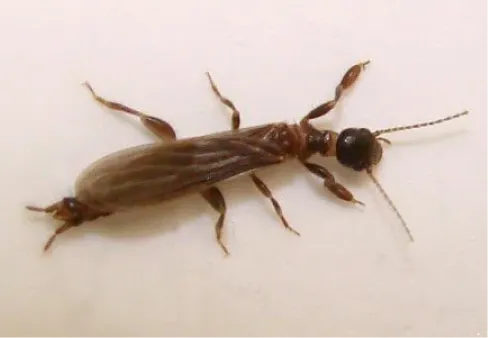Wolf spiders are large, fast-moving hunting arachnids that don't build webs. Despite intimidating size, these beneficial predators help control other pest populations.

Wolf spiders are large, ground-dwelling hunters common throughout Southern California. Unlike web-building spiders, these robust arachnids actively hunt their prey, using their excellent vision and speed to capture insects and other small prey.
These beneficial predators help control pest populations in gardens and landscapes. While their large size (up to 2 inches) can be intimidating, they generally avoid human contact and rarely bite unless handled. Females carry their egg sacs attached to their spinnerets and later carry their spiderlings on their backs, making them unique among spiders. Their presence in yards and gardens is typically beneficial, though they may occasionally enter homes while hunting or seeking shelter. Despite their fearsome appearance, wolf spiders are considered beneficial insects that help maintain ecological balance by controlling pest populations.

Anatomy of Wolf Spiders
Wolf spiders have distinctive features adapted for their hunting lifestyle.
- Eyes
- Pedipalps
- Cephalothorax
- Abdomen
- Legs
- Spinnerets

How to Identify Wolf Spiders
These large spiders are brown or gray with striped patterns, featuring eight eyes arranged in three rows. They have robust, hairy bodies and are active hunters rather than web builders.

Habitat of Wolf Spiders
Wolf spiders are primarily ground-dwellers, found in gardens, leaf litter, and around building foundations. They may enter homes through ground-level entrances, particularly basements and garages.

Warning Signs of Wolf Spiders
Look for rapid movement along the ground, especially at night. Females carrying egg sacs or young on their backs are distinctive signs of wolf spider presence.
Warning Signs of Wolf Spiders
Look for rapid movement along the ground, especially at night. Females carrying egg sacs or young on their backs are distinctive signs of wolf spider presence.







Control Methods for Wolf Spiders
Management focuses on exclusion through door sweeps and sealing gaps. Reducing ground cover near buildings and maintaining clean perimeters helps prevent infestations.
We Provide the Care toEliminate Termites and Pests For Good
Protecting your home from pests shouldn't be complicated. The Termite Guy makes it simple with wholistic solutions to inspect, treat, and restore your home back to perfection. With a 5 year pest-free warranty and over 25 years of success, we ensure every home is safe and secure.

Inspections

Treatments

Damage Repair
.avif)
.avif)
.avif)
.avif)











































